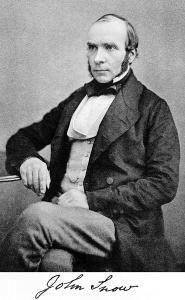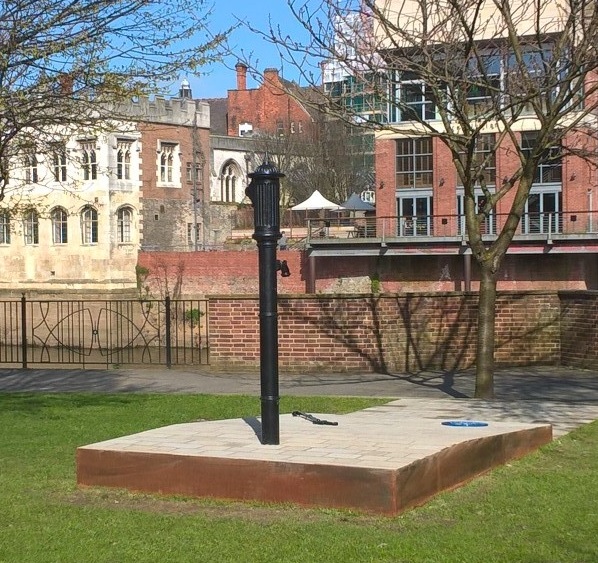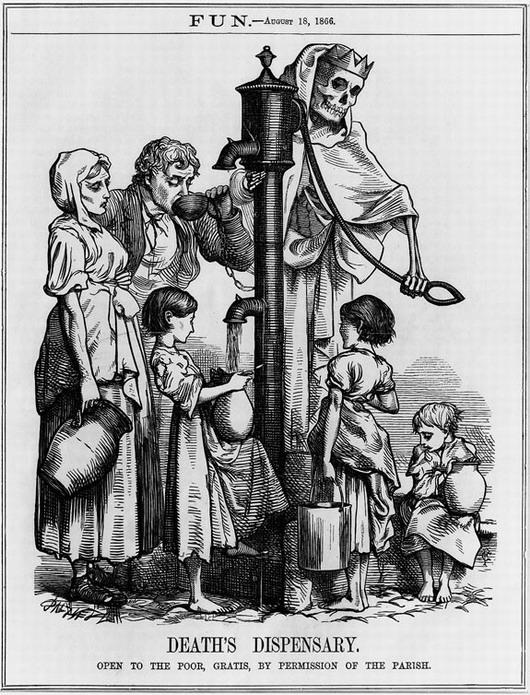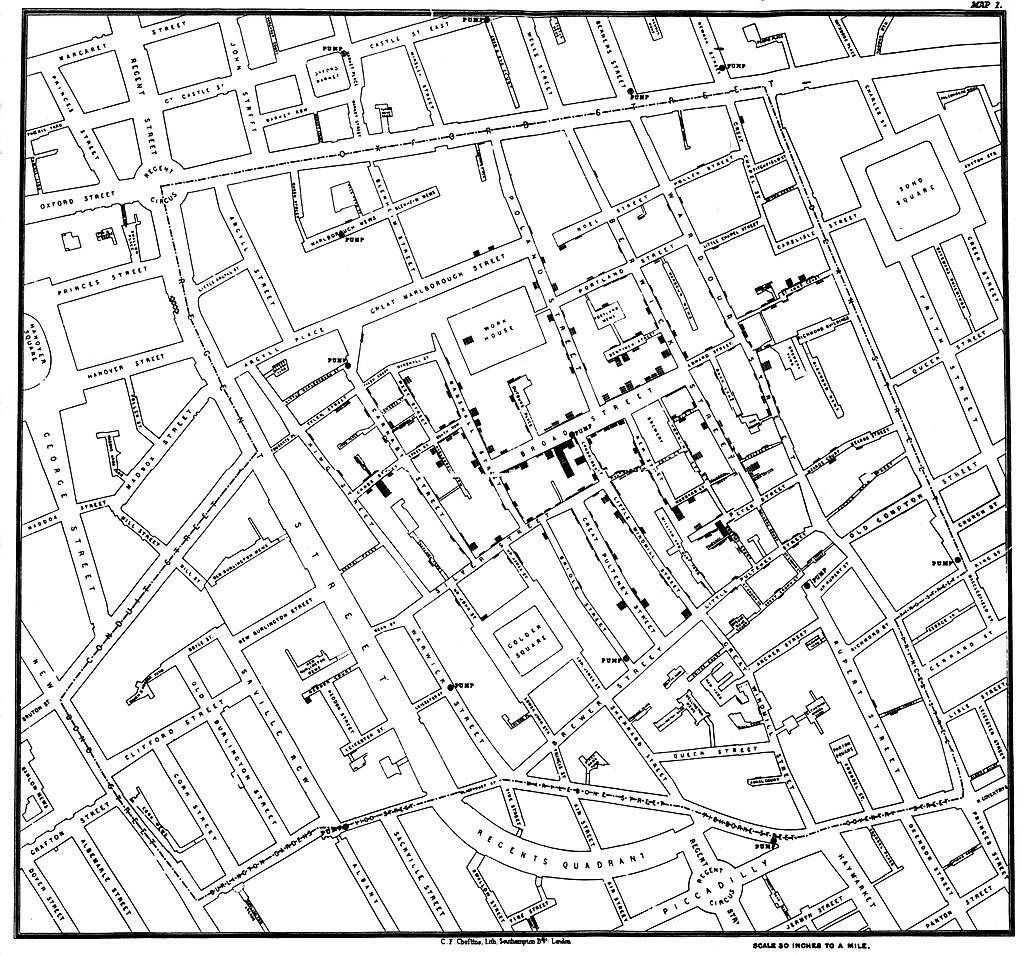Join us as we journey back in time. No pushing.
Let’s be very clear here; this month’s article is not about the life of ‘The King in The North’ Jon Snow from Game of Thrones. No, here we examine a Dr John Snow, son of York and widely regarded as the father of epidemiology – the study of how diseases spread. If you’ve never heard of him, take a wander through the gardens along North Street and you’ll find a memorial to him in the form of a water pump missing its handle. Here’s why.
 For a guy who went on to become one of the most respected medical minds of the Victorian era, and a favourite of Queen Victoria herself, no less, John Snow was born in poverty. Born in the slums of North Street in 1813, when the street was one of the poorest parts of the city, Snow was the son of a labourer who toiled each day in the nearby coal yard. As well as being dangerous and overcrowded, North Street was also riddled with disease from the frequently flooding River Ouse; then polluted by run-off from markets and, appallingly, graveyards further up river. For a chap who would later study disease, this was a baptism of fire.
For a guy who went on to become one of the most respected medical minds of the Victorian era, and a favourite of Queen Victoria herself, no less, John Snow was born in poverty. Born in the slums of North Street in 1813, when the street was one of the poorest parts of the city, Snow was the son of a labourer who toiled each day in the nearby coal yard. As well as being dangerous and overcrowded, North Street was also riddled with disease from the frequently flooding River Ouse; then polluted by run-off from markets and, appallingly, graveyards further up river. For a chap who would later study disease, this was a baptism of fire.
Escape
Fortunately relief came when John was 14. As he demonstrated a keen mind, especially where maths was concerned, he managed to win an apprenticeship with Newcastle surgeon William Hardcastle, and so left York for good. We know – normally these articles linger in York for the duration, but stick with us, it’s worth it.
While an apprentice, John experienced a cholera epidemic in the village of Killingworth, just outside Newcastle, and treated the victims. Back then the miasma theory was dominant, which meant that people believed that illnesses were spread by pollution and bad odours. The plague was attributed to this, as were sexually transmitted diseases like chlamydia (that’s the story they were sticking, too, anyway…). Even as a youngster John struggled to believe this, as there was no evidence of exactly how the diseases were transmitted by the air.
Clean living
Interestingly, as he was an apprentice, he was forbidden to drink alcohol. This stayed with him when he moved to London in 1836 and he joined the abstinence movement. He was also a vegetarian, and
would drink only distilled water which he considered to be ‘pure’. That would come in handy while living in London.
After graduating from the University of London in 1844, and after being admitted to the Royal College of Surgeons, Snow became a founding member of the Epidemiology Society of London, which was formed as a response to a devastating outbreak of cholera. The group’s aim was to work out how and why diseases spread so quickly throughout certain areas of the city.
Snow received much attention during a particularly bad outbreak in Soho in 1854. Using research and statistics of where the worst effected residents lived, John was able to track the source of the disease to the Broad Street water pump. He, along with his colleagues, realised that contamination in the water was making people ill, not polluted air. Presenting his findings to the local authority, the decision was made to remove the handle from the pump to stop people drawing water from it. Although Snow himself admits that the outbreak was already in retreat before this happened, the number of infections drastically reduced.
His findings proved that not only was that particular pump the epicentre of the outbreak, but also that the Southwark and Vauxhall Waterworks Company had been drawing water to it from a heavily polluted section of the River Thames. The incident was a major breakthrough in the the importance of public health.
Numb Queen
John Snow’s work, particularly in plotting the location of infected people, laid the foundations of our modern understanding of the spread of diseases, as well dispelling the medieval belief that a bad smell can make you ill (make your own fart jokes here). But that wasn’t all…
As well as saving countless lives in the following 200 years, John was also a pioneer in the field of anaesthetic. He researched the use of ether and chloroform as an anaesthetic, so that patients could undergo live-saving surgery and procedures without pain and distress. He designed tools and masks that would allow him to administer the gasses, and he famously attended the birth of two of Queen Victoria’s children. Snow was present at the births of both Prince Leopold and Princess Beatrice, administering chloroform to the Queen during labour to help with the pain, despite the complaints of the Church of England who believed the practice was ungodly. Those guys.
Unfortunately this incredible career, which has made such a difference to all of our lives today, was tragically cut short. On 10th June, 1856, at the aged of just 45, John suffered a stroke and died six days later. He was buried at Brompton Cemetery, and his grand headstone can still be viewed today.
However, for a more local monument, head over to North Street to see the handle-less pump which pays homage to one of our most significant, but oft overlooked, ancestors. Keep’em coming, York.













Add a comment